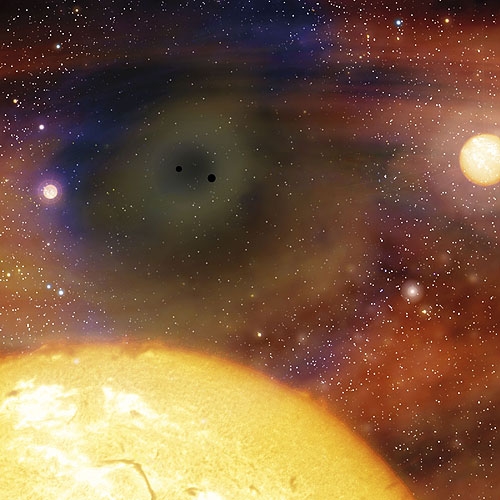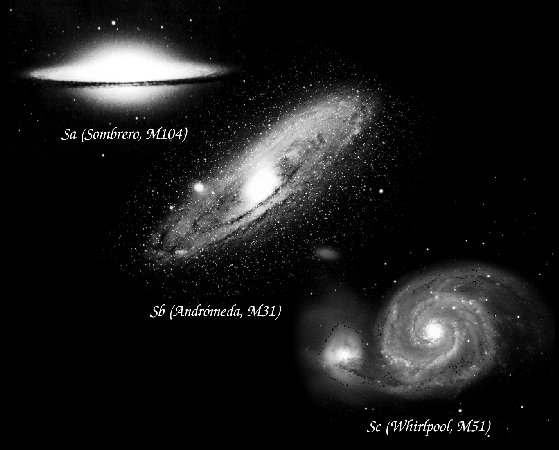Research Interests

Lee Spitler (left) and Alister Graham (right) report on the existence of massive black holes in dense star clusters.
Alister Graham's field of research is Extragalactic Astronomy, in particular, studying the structure and dynamics of galaxies, their central star clusters and supermassive black holes, and examining what this can tell us about the galaxy formation process. This has led him to investigate some of the largest, and also some of the smallest, galaxies in our Universe. Programs he has been involved with include:
Graham and collaborators have found that stars in massive elliptical galaxies are more centrally concentrated than those in less massive elliptical galaxies. That is, giant galaxies are not simply larger versions of smaller galaxies. A unifying continuum of structures is however observed. Why gravity, or more generally nature, should be this way is not yet fully understood. What we do know is that more centrally concentrated elliptical galaxies host larger "supermassive black holes" than less concentrated elliptical galaxies, and that the biggest such black holes are around one billion times more massive than our Sun!
The collisional-construction of new galaxies from the merger of less massive galaxies is thought to be a common occurrence in our Universe. Coupled with the presence of a supermassive black hole at the heart of most galaxies, such encounters may explain the damaged nuclei in giant galaxies - a phenomenon visible thanks to the Hubble Space Telescope. Although some "core-depletion" is due to the central black holes dining on stars that ventured to close, it is primarily from the gravitational slingshot effect that the coalescing black holes - from the pre-merged galaxies - have on stars while they themselves sink to the bottom of the potential well of the newly wed galaxy.

Artist's impression of the evacuated core at the center of a large galaxy due to the damage caused by two coalescing supermassive black holes.
(Image credit: Gabriel Perez Diaz, SMM del IAC, Spain)
One of the key criteria of spiral galaxies is the relative size of their central bulge and outer spiral disk: the apparent prominence of the bulge diminishes as one moves from early-type (Sa) to late-type (Sc-Sd/Sm) spiral galaxies (see below). Intriguingly, research performed with colleagues in Spain has revealed that the relative size of the bulge and disk does not vary along the Hubble spiral sequence but is an optical illusion. The bulges of spiral galaxies should be thought of as something like ice-bergs. Progressing towards the later galaxy types, the bulges are relatively more and more submerged (in terms of their flux) within their surrounding disks, that is, their intensity has been turned down. The shape of the `ice-berg' (bulge) has also been observed to vary systematically with spiral galaxy type, such that bulges in later type spirals are less centrally concentrated. Graham is actively exploring the connection between "bulges" and their massive black holes.
